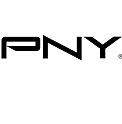 Nvidia GeForce RTX 3080
Nvidia GeForce RTX 3080
 NVIDIA Quadro M5000
NVIDIA Quadro M5000
Comparision Nvidia GeForce RTX 3080 vs NVIDIA Quadro M5000
Grade
Top specs and features
Passmark score
GPU base clock speed
RAM
Memory bandwidth
Effective memory speed
Description
The Nvidia GeForce RTX 3080 video card is based on the Ampere architecture. NVIDIA Quadro M5000 on the Maxwell 2.0 architecture. The first has 28300 million transistors. The second is 5200 million. Nvidia GeForce RTX 3080 has a transistor size of 8 nm versus 28.
The base clock speed of the first video card is 1440 MHz versus 861 MHz for the second.
Let's move on to memory. Nvidia GeForce RTX 3080 has 10 GB. NVIDIA Quadro M5000 has 10 GB installed. The bandwidth of the first video card is 760.3 Gb/s versus 211.6 Gb/s of the second.
FLOPS of Nvidia GeForce RTX 3080 is 30.4. At NVIDIA Quadro M5000 4.29.
Goes to tests in benchmarks. In the Passmark benchmark, Nvidia GeForce RTX 3080 scored 23200 points. And here is the second card 9242 points. In 3DMark, the first model scored There is no data points. Second There is no data points.
In terms of interfaces. The first video card is connected using There is no data. The second is PCIe 3.0 x16. Video card Nvidia GeForce RTX 3080 has Directx version 12. Video card NVIDIA Quadro M5000 -- Directx version - 12.1.
Regarding cooling, Nvidia GeForce RTX 3080 has 320W heat dissipation requirements versus 150W for NVIDIA Quadro M5000.
Why Nvidia GeForce RTX 3080 is better than NVIDIA Quadro M5000
- Passmark score 23200 против 9242 , more on 151%
- GPU base clock speed 1440 MHz против 861 MHz, more on 67%
- RAM 10 GB против 8 GB, more on 25%
- Memory bandwidth 760.3 GB/s против 211.6 GB/s, more on 259%
- Effective memory speed 12000 MHz против 6612 MHz, more on 81%
- FLOPS 30.4 TFLOPS против 4.29 TFLOPS, more on 609%
- Turbo gpu 1710 MHz против 1038 MHz, more on 65%
Nvidia GeForce RTX 3080 vs NVIDIA Quadro M5000: highlights


Performance
Memory
General information
Functions
Benchmark tests
Ports
FAQ
How does the Nvidia GeForce RTX 3080 processor perform in benchmarks?
Passmark Nvidia GeForce RTX 3080 scored 23200 points. The second video card scored 9242 points in Passmark.
What FLOPS do video cards have?
FLOPS Nvidia GeForce RTX 3080 is 30.4 TFLOPS. But the second video card has FLOPS equal to 4.29 TFLOPS.
What power consumption?
Nvidia GeForce RTX 3080 320 Watt. NVIDIA Quadro M5000 150 Watt.
How fast are Nvidia GeForce RTX 3080 and NVIDIA Quadro M5000?
Nvidia GeForce RTX 3080 operates at 1440 MHz. In this case, the maximum frequency reaches 1710 MHz. The clock base frequency of NVIDIA Quadro M5000 reaches 861 MHz. In turbo mode it reaches 1038 MHz.
What kind of memory do graphics cards have?
Nvidia GeForce RTX 3080 supports GDDR6. Installed 10 GB of RAM. Throughput reaches 760.3 GB/s. NVIDIA Quadro M5000 works with GDDR5. The second one has 8 GB of RAM installed. Its bandwidth is 760.3 GB/s.
How many HDMI connectors do they have?
Nvidia GeForce RTX 3080 has 1 HDMI outputs. NVIDIA Quadro M5000 is equipped with There is no data HDMI outputs.
What power connectors are used?
Nvidia GeForce RTX 3080 uses There is no data. NVIDIA Quadro M5000 is equipped with There is no data HDMI outputs.
What architecture are video cards based on?
Nvidia GeForce RTX 3080 is built on Ampere. NVIDIA Quadro M5000 uses the Maxwell 2.0 architecture.
What graphics processor is being used?
Nvidia GeForce RTX 3080 is equipped with GA102. NVIDIA Quadro M5000 is set to GM204.
How many PCIe lanes
The first graphics card has There is no data PCIe lanes. And the PCIe version is 4. NVIDIA Quadro M5000 There is no data PCIe lanes. PCIe version 4.
How many transistors?
Nvidia GeForce RTX 3080 has 28300 million transistors. NVIDIA Quadro M5000 has 5200 million transistors





































